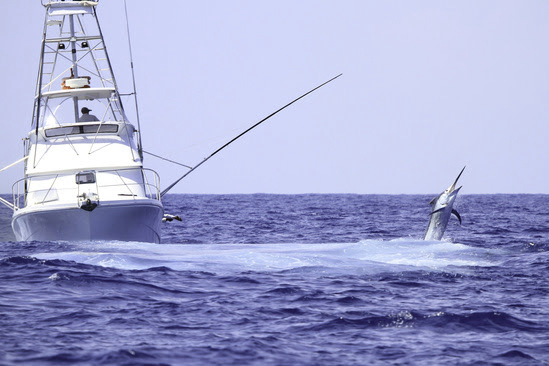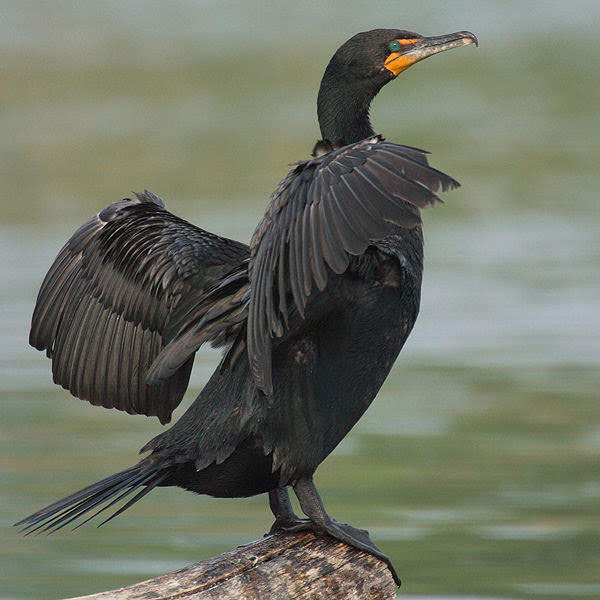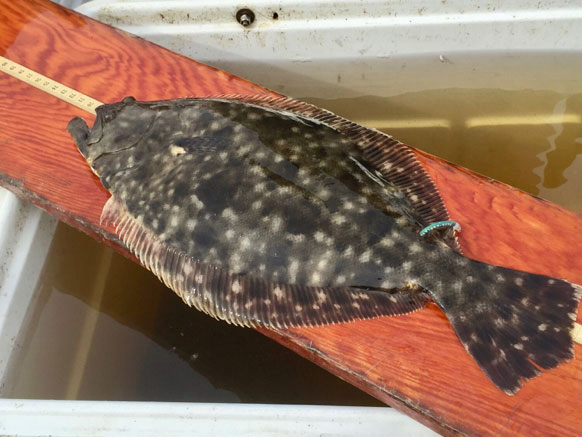
Sustainability Successes for Atlantic Highly Migratory Fish Species |
| A look back at important scientific findings and management measures in 2019 from NOAA Fisheries. Managing Atlantic tunas, sharks, swordfish, and billfish presents unique challenges. These species can travel vast distances across state and international borders to find food or reproduce. Highly migratory species (HMS) are also some of the most economically important fish in the Atlantic. Managing them sustainably requires collaboration and the best available science. We took important steps in 2019 to prevent overfishing of HMS while providing commercial and recreational fishing opportunities. Read more about some of these successes below. Historic Agreement Brings Sharks Under Stronger International ManagementIn November, the International Commission for the Conservation of Atlantic Tunas (ICCAT) took the first steps toward establishing international management of open-ocean and highly migratory sharks and rays. The commission adopted amendments to its 50-year-old agreement that clarifies its authority to manage these species. The decision, endorsed by 53 countries, concludes a 10-year negotiation led by the United States. The amendments establish a strong foundation for precautionary and ecosystem-based approaches to fisheries management. Once implemented, they are expected to ensure that all countries with shark fisheries will be required to meet ICCAT conservation measures—just as countries have to do with other ICCAT-managed fisheries like Atlantic bluefin tuna and white marlin. ICCAT also adopted new limits on the number of North Atlantic blue sharks that major fishing nations can catch each year. The decision won’t affect American fishermen since the United States has already set similar limits. This new measure will help hold other ICCAT members accountable to agreed limits and support long-term sustainability. Learn more about U.S. achievements at ICCAT Lower Total Allowable Catch for Marlin Will Spur Rebuilding The number of blue marlin that countries can fish from the Atlantic will be lower in 2020. ICCAT members agreed in November to reduce the annual total allowable catch for all Atlantic blue marlin to 1,670 tonnes. That’s 330 tonnes less than in past years. Co-sponsored by the United States, the measure is expected to end overfishing and allow the stock to rebuild. U.S. recreational anglers have only been able to keep a combined total of 250 blue marlin, white marlin, and roundscale spearfish each year since 2001. And commercial fishermen are not allowed to fish for any billfish. Thanks to these well-established conservation measures, the new Atlantic-wide catch limit will not require U.S. fishermen to catch fewer marlin. Catch Share Program Successfully Reduced Bluefin BycatchWe conducted a formal review this year of our Individual Bluefin Quota Program. Launched in 2015, the program gives fishermen using pelagic longline gear an economic incentive to avoid interactions with bluefin tuna. That allows us to reduce the number of bluefin caught unintentionally while keeping longline fishermen on the water. And it worked. The program reduced the average annual bluefin bycatch by 65 percent compared to the three years before it began. That’s about 330,000 pounds—or around four fully loaded semitrucks—less bycatch each year. There is more work to be done to ensure our regulations are effective in both maintaining the bluefin population and supporting the fishing industry. But it’s clear that this program has successfully made commercial fishermen accountable for reducing bluefin bycatch. Learn more about our review of the Individual Bluefin Quota Program New Management Measures Mitigate Shortfin Mako OverfishingIn March, we implemented new measures that prevent commercial fishermen from keeping Atlantic shortfin mako sharks that are still alive when pulled to the boat. The rule also set new minimum size requirements in the recreational fishery. These measures allow more shortfin mako to reach maturity before they’re harvested. Additionally, recreational shark fishermen are now required to use circle hooks in all federal waters of the Atlantic. Circle hooks have been shown to reduce the chance that a shark dies after being released. These measures together are helping to end overfishing of Atlantic shortfin mako sharks while providing responsible fishing opportunities. They are also part of an ongoing, international effort through ICCAT to rebuild shortfin mako populations across the Atlantic. The commission is slated to hold a special meeting in July 2020 to consider additional conservation actions. Learn more about these measures Circle Hook Requirement Will Help Sharks Live After Being ReleasedAn interstate commission voted in 2019 to require recreational fishermen to use circle hooks when fishing for sharks in state waters. The measure, passed by the Atlantic States Marine Fisheries Commission in October, is expected to save thousands of sharks after being caught and released. Unlike the traditional j-hook, circle hooks grab the corner of a shark’s mouth, reducing injury to their stomach and other organs. It’s also easier for fishermen to release a shark caught with a circle hook. Together, these traits increase the chance that a prohibited shark—or one too small to be kept—will survive after being released. The commission’s decision comes after years of collaboration with NOAA Fisheries to create consistent conservation measures in state and federal waters. The commission also voted to extend NOAA Fisheries’ minimum size requirements for shortfin mako sharks to state waters. Beginning in 2020, recreational fishermen from Maine to Florida must release any shortfin mako measuring less than 71 inches for males or 83 inches for females. Learn more about how we manage sharks Around 30 In-Season Changes Kept Fishermen on the Water While Safeguarding StocksThroughout the year, we used data collected from fishermen and dealers to open and close fisheries, transfer quotas, and tweak retention limits. In-season changes like these are critical to the success of the U.S. fishery management approach. They allow us to give fishermen as many fishing opportunities as possible while protecting stocks from overfishing. In-season actions also ensure that fishermen can take to the water throughout the year. Commercial industries especially rely on that consistent access to provide consumers with sustainable seafood choices. Most of these in-season rules dealt with bluefin tuna, one of the most coveted fish in the Atlantic. We are dedicated to ensuring that high demand doesn’t lead to overfishing. That’s why we oversee, in collaboration with the international community, one of the most comprehensive and responsive fishery management systems in the world.Learn more about how we manage Atlantic bluefin tuna |



